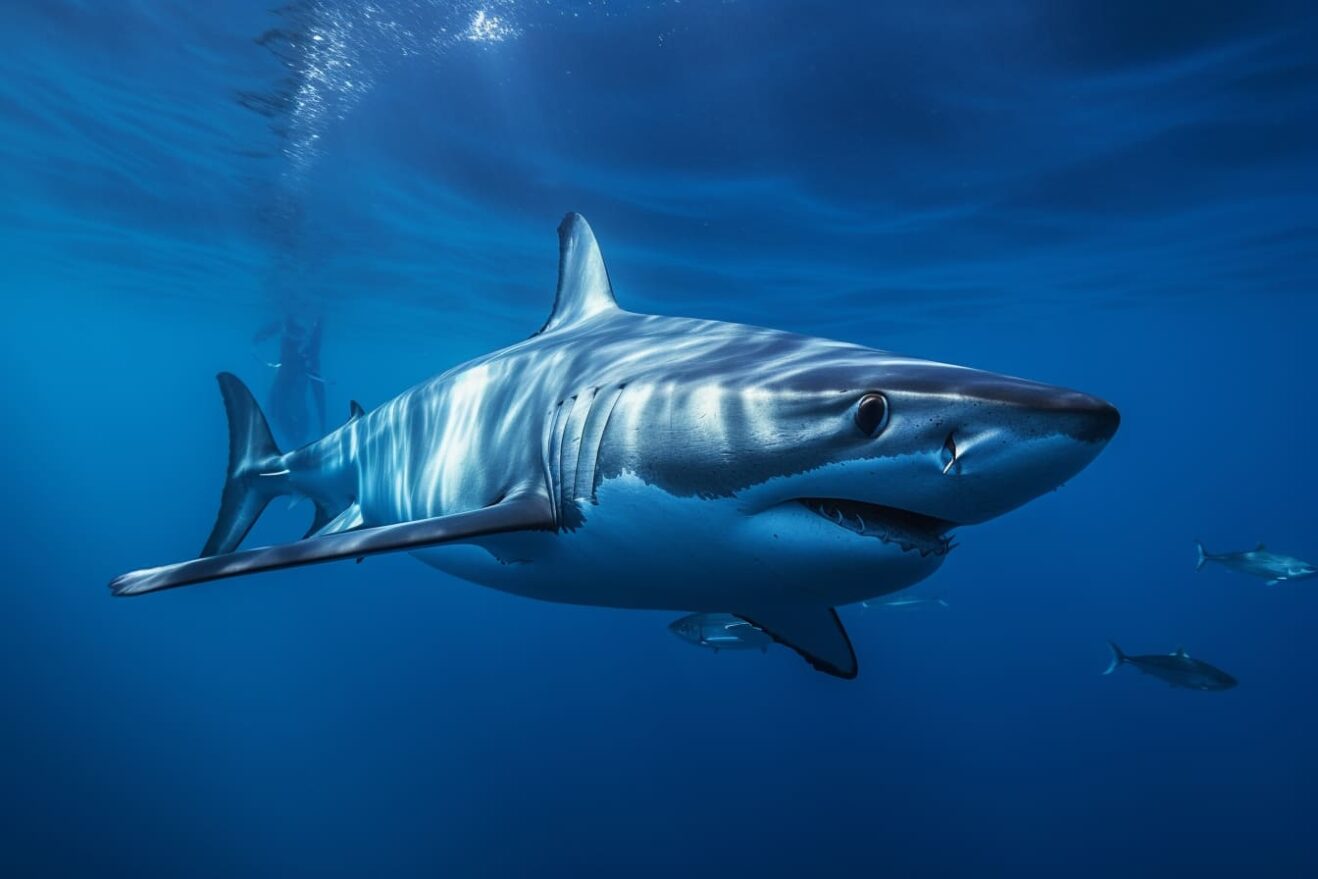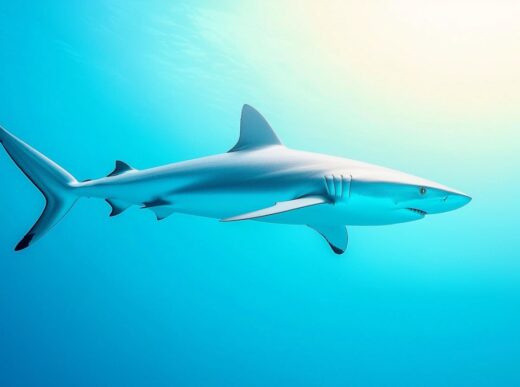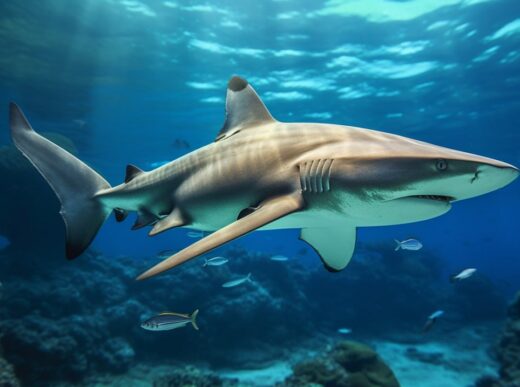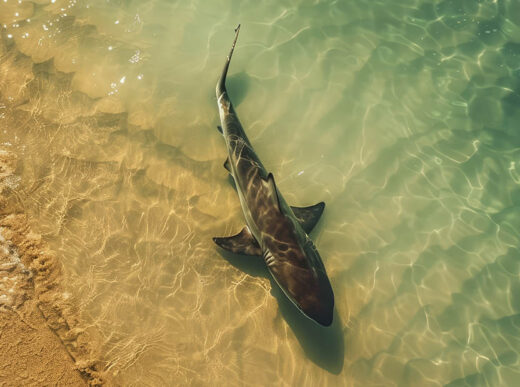Get ready for an underwater adventure as we explore the incredible world of the mako shark! Known as the fastest swimmer in the ocean, this shark is sure to amaze you. We’ve rounded up 20 fun and fascinating facts that will completely change the way you look at these remarkable creatures.
20 Amazing Facts About Mako Sharks
So, buckle up for an exhilarating journey through the mysterious waters where makos rule the waves!
Characteristics
1. The mako shark goes by various names like blacktip shark, mackerel shark, blue-grey shark, and herring shark. And guess what? «Mako» itself comes from the Maori language, meaning «shark’s tooth» – pretty cool, right?
2. Picture this: a sleek, swift, and quite large shark. The typical adult size? Around 3 meters, weighing up to 135 kilograms.
3. Now, let’s talk speed! The mako’s spindle-shaped body lets it hit an average speed of up to 74 kilometers per hour. And when it’s really in the mood, this shark can even break 100 kilometers per hour – talk about a speed demon!
4. What makes the mako a speed superstar? Its body is like a well-tuned machine for high-speed cruising. When it’s time to accelerate, the shark does a little scale ruffling to reduce turbulence – like a streamlined racing car on the ocean highway.
5. Hold on tight! Makos are known for their incredible jumps. Picture this: they leap out of the water in hot pursuit of prey, sometimes doing a series of jumps in a row. These sharks can soar up to 6 meters in height, giving even the best human high jumpers a run for their money.
6. Want to spot a mako? Look for a grey-blue back – hence the name – while the belly keeps it classic in white. It’s like the shark’s own fashion statement in the ocean!
Habitats
7. The mako shark is like a globe-trotter of the seas, hanging out in tropical and temperate waters across all oceans. But here’s the catch – it’s not a fan of cold high latitudes, so you won’t catch it packing a suitcase for polar adventures.
8. If you’re dreaming of a mako encounter, some of the hottest tourist spots include the Mediterranean and Red Seas, the Gulf of Mexico, and the coastlines of Southeast Asia, China, and Australia. These sharks sure know how to pick their vacation spots!
9. Dive into the ocean depths with a mako? Not likely. These sharks prefer the VIP section of the water – the surface. Anything below 500 meters is a no-go zone for these surface-savvy swimmers.
Lifestyle
10. The mako shark is the ultimate jet-setter of the sea, living a life on the go. With its restless nature and top-tier predatory skills, it’s no surprise that these sharks boast a super-high metabolic rate. They’re like the speed demons of the ocean, digesting their meals in a mere 1–2 days – talk about a fast-food lifestyle!
Eating Habits
11. The mako shark has a diverse palate, with a diet centered around various fish that call the upper layers of the world’s oceans home. They are voracious predators, not hesitating to take on challenges like squids and even other sharks. Imagine the audacity – even giants like the hammerhead shark aren’t safe from their attacks!
12. These sharks are tactical in their strikes, usually opting for a sneak attack from below. With a ferocious bite force reaching 13,000 Newtons, they hold the record among sharks. It’s like a quick, precision strike, leaving their prey incapacitated.
13. The mako lives life in the fast lane, needing to consume up to 3% of its body weight in a single day. That’s a high-octane diet, especially when compared to their fellow sharks.
Intelligence and Social Behavior
14. When they’re young, mako sharks enjoy the company of their peers, hanging out in small packs. However, as they grow older, they become more independent, opting for solo hunting expeditions or joining groups of 3–5 individuals. These sharks are no strangers to intelligence, quickly learning the ropes of survival. With heightened senses like hearing, smell, and sight, they are well-equipped hunters in the vast ocean.
Reproduction
15. Now, when it comes to expanding their shark family, makos play the oviparity card. Picture this: the mom-to-be rocks a pregnancy for a cool 15–18 months, and in the baby shark department, she can pop out a litter ranging from 10 to 18 cute little calves. And if you can believe it, in some rare cases, mama might even surprise everyone with a whopping 40 baby sharks! Quite the fin-tastic family affair, right?
Population
16. Unfortunately, the mako shark party is losing some of its guests, as their population has been on a decline. Right now, these speedsters are even on the endangered species list. Wrapping your head around the exact number of makos still hanging in the oceanic crowd? Well, that’s a bit of a mystery.
Danger To Humans
17. Now, here’s where things get a bit tense. The mako shark, despite not having humans on their menu, has been involved in quite a few unfriendly encounters. Dozens of mako attacks on humans and even small boats have made it to the record books in recent years.
18. But, hold your breath, because humans are also playing a big part in the mako’s struggle for survival. Every year, tens of tonnes of these commercially significant sharks are reeled in. From their meat being used as a meal to their teeth being transformed into souvenirs, and even their liver being repurposed for vitamins, it’s a tough ride for the mako sharks.
Where Can You See This Shark?
19. The mako shark can be easily spotted on any popular beach in any ocean, as it calls the tropical sea its home. In recent years, various shark tours have become widespread, allowing divers to observe mako sharks from special cages. These tours are conducted off the coast of California, South Africa, and the Maldives.
Are There Any Aquariums with Mako Shark?
20. Observing the mako shark in oceanariums is nearly impossible. They exhibit extremely poor tolerance to captivity. Once placed in an aquarium, these sharks refuse to eat and may even start hitting the walls. The mako shark only lasted 5 days in the New Jersey Aquarium, marking an absolute record.




